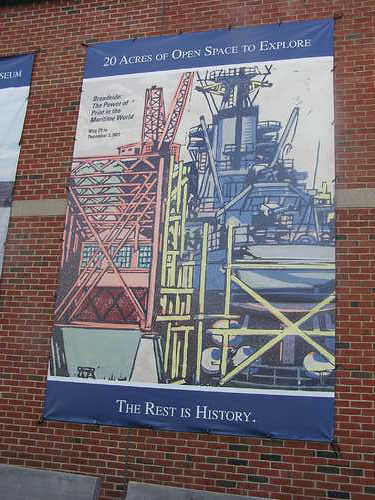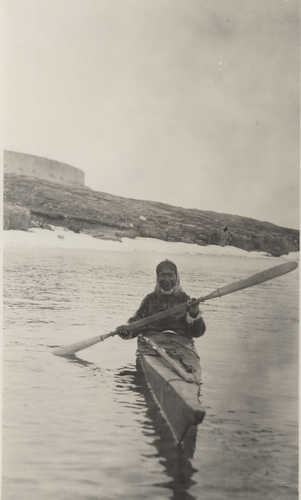Keywords: Vessel
Item 33998
Friendship vessel, Blue Hill, 1907
Contributed by: Blue Hill Public Library Date: 1907 Location: Blue Hill Media: Photographic print
Item 148769
"Sunbeam II" passengers watching Norwegian vessel "Toronto" deliver sailboats, Bear Island, 1938
Contributed by: Maine Seacoast Mission Date: 1938-05-06 Location: Northeast Harbor Media: Photographic print
Exhibit
The rocky coastline of Cape Elizabeth has sent many vessels to their watery graves.
Exhibit
The Doris Hamlin, a four-masted schooner built at the Frye-Flynn Shipyard in Harrington, was one of the last vessels launched there, marking the decline of a once vigorous shipbuilding industry in Washington County.
Site Page
Blue Hill, Maine - Friendship vessel, Blue Hill, 1907
"Friendship vessel, Blue Hill, 1907 Contributed by Blue Hill Public Library Description A sailing vessel named Friendship in Blue Hill."
Site Page
Thomaston: The Town that Went to Sea - The End of Wooden Shipbuilding - 1910 to 1950
"There remains a fairly accurate list of the vessels launched from the shop in the possession of a former owner."
Story
A first encounter with Bath and its wonderful history
by John Decker
Visiting the Maine Maritime Museum as part of a conference
Story
Minik Wallace 1891-1918
by Genevieve LeMoine, The Peary-MacMillan Arctic Museum
The life of Minik, an Inuit person from Greenland who grew up in New York City.
Lesson Plan
Primary Sources: The Maine Shipyard
Grade Level: 9-12
Content Area: Social Studies
This lesson plan will give students a close-up look at historical operations behind Maine's famed shipbuilding and shipping industries. Students will examine primary sources including letters, bills of lading, images, and objects, and draw informed hypotheses about the evolution of the seafaring industry and its impact on Maine’s communities over time.
Lesson Plan
Longfellow Studies: Longfellow Amongst His Contemporaries - The Ship of State DBQ
Grade Level: 9-12
Content Area: English Language Arts, Social Studies
Preparation Required/Preliminary Discussion:
Lesson plans should be done in the context of a course of study on American literature and/or history from the Revolution to the Civil War.
The ship of state is an ancient metaphor in the western world, especially among seafaring people, but this figure of speech assumed a more widespread and literal significance in the English colonies of the New World. From the middle of the 17th century, after all, until revolution broke out in 1775, the dominant system of governance in the colonies was the Navigation Acts. The primary responsibility of colonial governors, according to both Parliament and the Crown, was the enforcement of the laws of trade, and the governors themselves appointed naval officers to ensure that the various provisions and regulations of the Navigation Acts were executed. England, in other words, governed her American colonies as if they were merchant ships.
This metaphorical conception of the colonies as a naval enterprise not only survived the Revolution but also took on a deeper relevance following the construction of the Union. The United States of America had now become the ship of state, launched on July 4th 1776 and dedicated to the radical proposition that all men are created equal and endowed with certain unalienable rights. This proposition is examined and tested in any number of ways during the decades between the Revolution and the Civil War. Novelists and poets, as well as politicians and statesmen, questioned its viability: Whither goes the ship of state? Is there a safe harbor somewhere up ahead or is the vessel doomed to ruin and wreckage? Is she well built and sturdy or is there some essential flaw in her structural frame?














